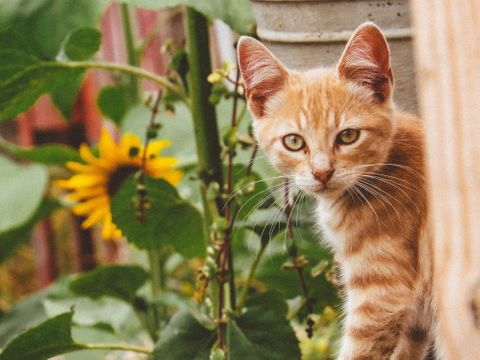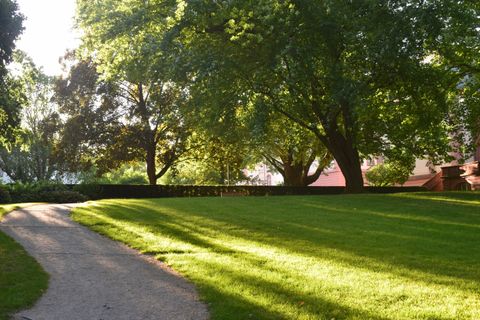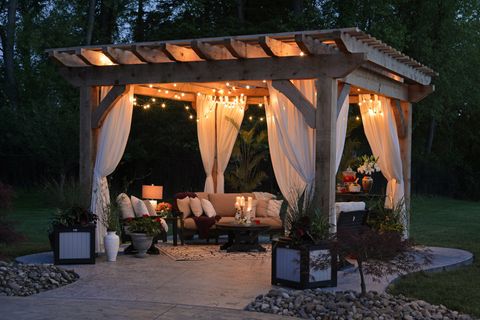6 pest repelling garden plants that are safe for your pets
It’s not exactly easy to enjoy your garden when pesky fleas, mosquitoes, and ticks are constantly buzzing around. But you don’t have to load up on citronella candles or cover yourself in bug spray—with some strategic planting, you can keep these itchy pests away (and keep your four-legged family members safe, too). Plus, most of them smell great!
1. Basil
Unlike many houseplants, basil is safe for dogs and cats, and it’s one of the best mosquito-repellent plants you can plant. Basil is toxic to mosquito larvae, so it will help to keep the population down in your yard or garden. According to a Purdue University study, basil is an antioxidant, so if your dog chews on a leaf or two, it won’t hurt them.
2. Rosemary
Rosemary keeps mosquitoes away from your plants, your pets, and your family—and it adds a pleasant aroma to your garden, too. It is very safe for dogs and other pets, and while it won’t totally get rid of fleas, it will help prevent them from bothering your animals.
...
moreKeep your yard green during a drought
This season, Franklin Country has been on a Critical Drought Alert. This has caused havoc for many of our lawns.
Unfortunately, saving a drought-stressed lawn isn’t as simple as taking out your garden hose. In fact, you may not legally be allowed to water your lawn during an active drought if you live in an area that has introduced water restrictions. So, what do you do? Here’s how to keep your grass green during a drought.
1. Water Your Lawn 1 to 2 Inches Per Week
Watering is the obvious way to help drought-stressed grass but it’s not always feasible. If there are no water restrictions in place, how often you need to water your lawn depends on a few different factors. In spring, you may only need to water it once or twice, but in the heat of summer, you should:
Water your lawn two to three times a week.
Ensure your lawn gets one to two inches of water per week.
As a general rule, water your lawn as soon as your grass starts to wilt or change color. If you're in a climate with particularly...
more6 Benefits of Hardscaping
What Is Hardscaping?
Hardscaping consists of man-made features, like paths or walls, incorporated into landscape architecture. Paved roads, driveways, pathways, fountains, patios, and decks are all elements found in backyard hardscapes. Hardscape materials often include concrete, wood, stone, brick, metal, gravel, boulders, mulch and pottery.
Achieve a More Sustainable and Stylish Backyard Space:
1. Very Low Maintenance
The most appealing benefit of backyard hardscapes is the very limited amount of maintenance they require. Once you create the design of your choosing, your backyard is set for years to come. That means no watering, mowing, pruning, snipping or trimming is needed.
2. Water-Efficient
Especially in areas where drought is common, hardscaping is a great solution to fight water waste. Instead of spilling out gallons and gallons of water to maintain your lawn, plants and flowers, a backyard hardscape allows you to go water-free. Plus, you won’t have to fret over your plants dying...
more


